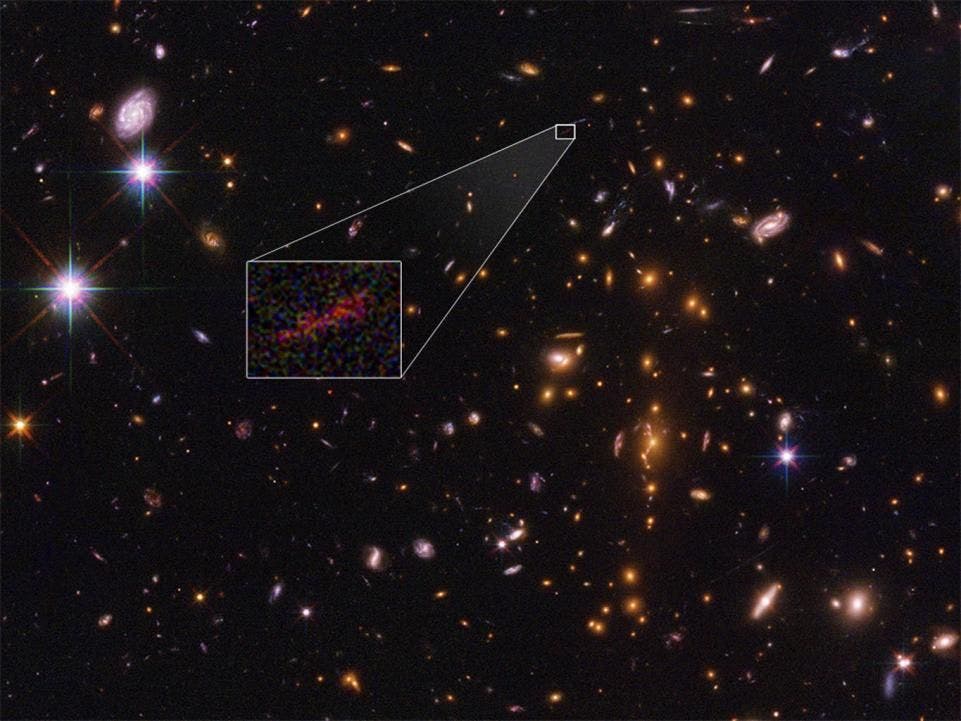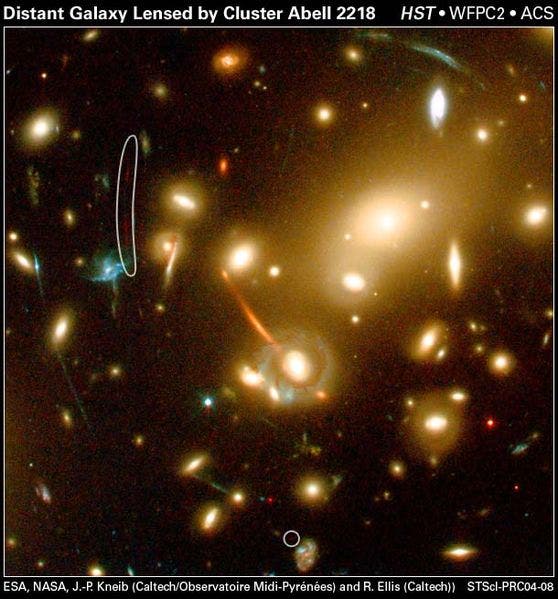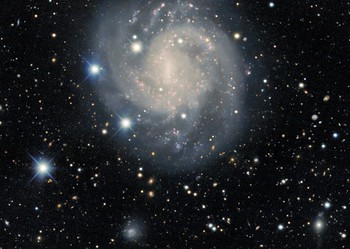
Astronomers peered inside one of the Universe’s oldest galaxies, which formed only 500 million years after the Big Bang. The unprecedented detailed image was amplified by a natural phenomenon called gravitational lensing, a lucky circumstance which will enable researchers to test theories concerning galaxy evolution.
“Pretty much every galaxy at that distance is an unresolved dot… it’s kind of a matter of luck to get a galaxy that’s lensed in just the right way to stretch it out and get that much detail – it’s a pretty nice find,” the study’s lead author Brett Salmon told BBC News.
An astronomical magnifying glass
Gravitational lensing is a cosmic phenomenon first proposed by Albert Einstein, as a result of the Theory of General Relativity, who predicted that whenever light from a distant star passes by a closer object, gravity acts like a magnifying lens bending the distant starlight but also brightening it. Astronomers often use gravitational lensing as a natural telescope, to great effect. The galaxy cluster Abell Cluster 2218 is a great example of this phenomenon, as illustrated below.

Previously, galaxies this far-away in the universe could only be imaged as tiny red pinpricks. Thanks to gravitational lensing, however, astronomers could see the SPT0615-JD galaxy bigger and brighter than any others from this distance.
The ancient galaxy recently identified by Salmon and colleagues is relatively small by today’s standards, having only one-hundredth the mass of the Milky Way. This characteristic may be common in early galaxies which formed shortly after the Big Bang.
Because the universe is in constant expansion, and has been ever since its inception, the light that reaches us from the far-away SPT0615-JD galaxy actually reflects what it looked like 13 billion years ago. It’s like peering back into the past, frame by frame. Today, this galaxy might not even exist anymore or it may have swollen to more respectable gargantuan proportions like other major galaxies in the universe.
It’s precisely this time capsule-like nature that makes SPT0615-JD so appealing. Having appeared so early in the universe’ history, astronomers can study it to confirm our galaxy formation theories. For instance, one important aspect of a galaxy’s evolution that’s rather elusive to scientists concerns the origin of ‘discs’. These are flat, rotating distributions of stars, gas, and dust. It’s unclear how the universe’s earliest galaxies assembled these rotating discs or when the discs first started to form.
SPT0615-JD doesn’t seem to have a disc but another paper presented at the same 231st AAS meeting found galaxies formed just 800 million years after the Big Bang could rotate. This rotation could be indicative of the formation of a disc.
We’ll be able to learn more about galaxy formation once the next generation of space telescopes — with the upcoming James Webb Telescope at the forefront — are deployed. James Webb, which is due to launch in 2019, will observe primarily in the infrared range and will have four scientific instruments to capture images and spectra of astronomical objects. Its much larger mirror implies that James Webb will have a ~15 times larger field of view than Hubble and significantly better spatial resolution than is available with the infrared Spitzer Space Telescope.






